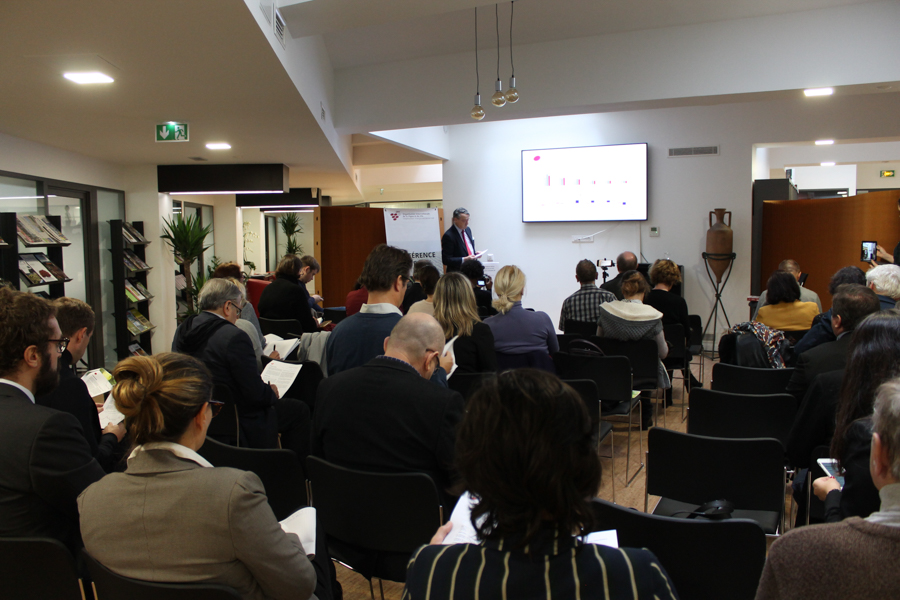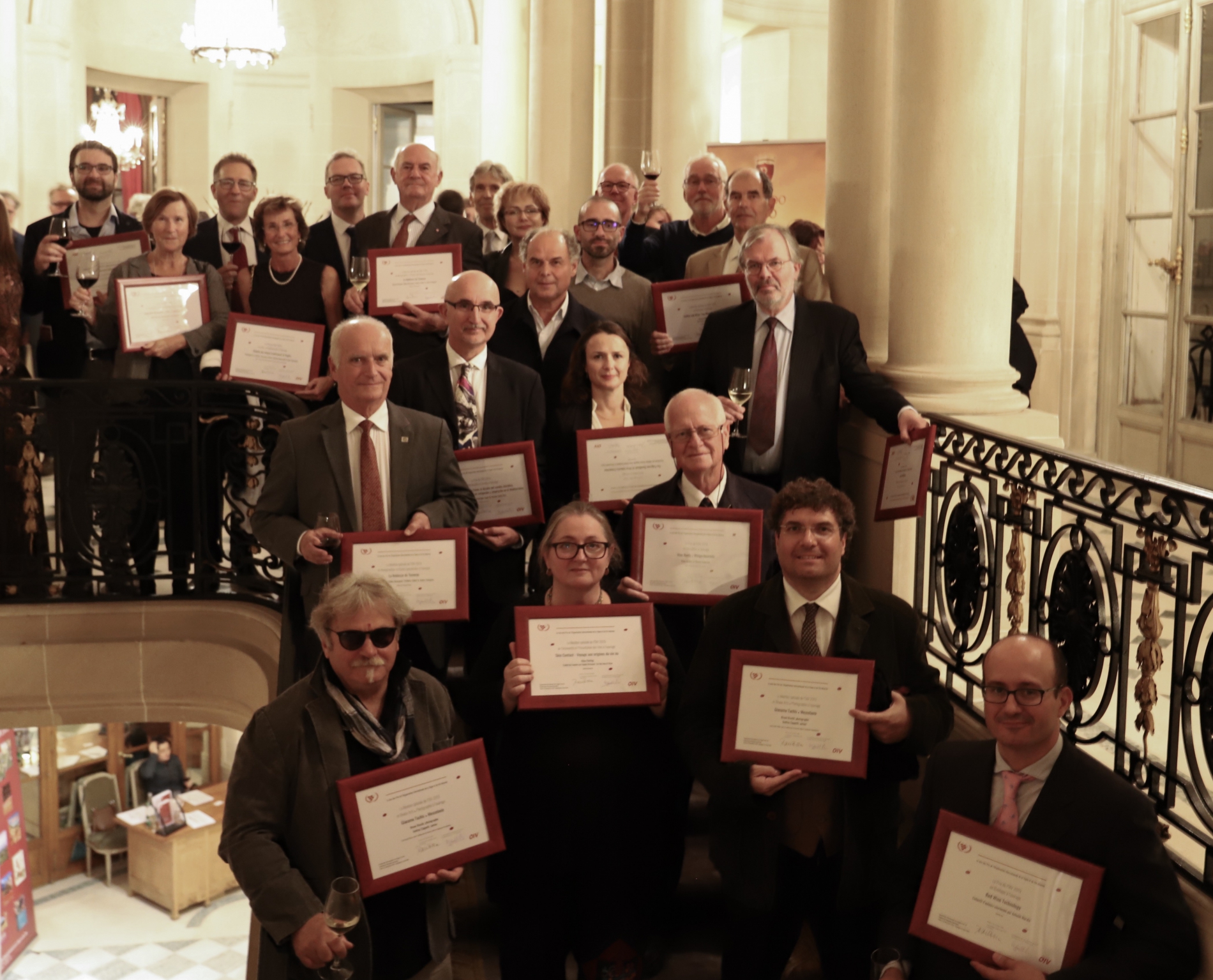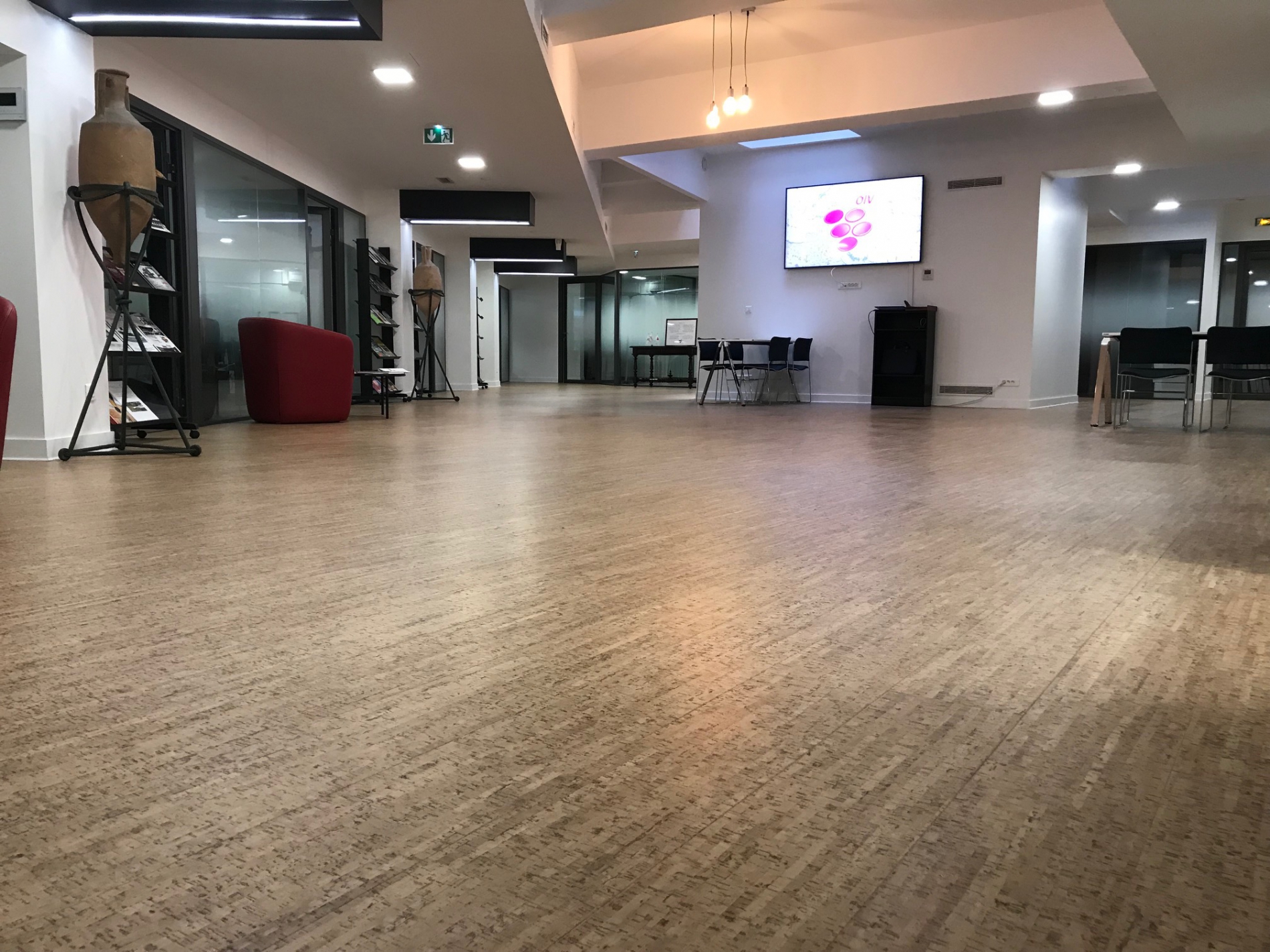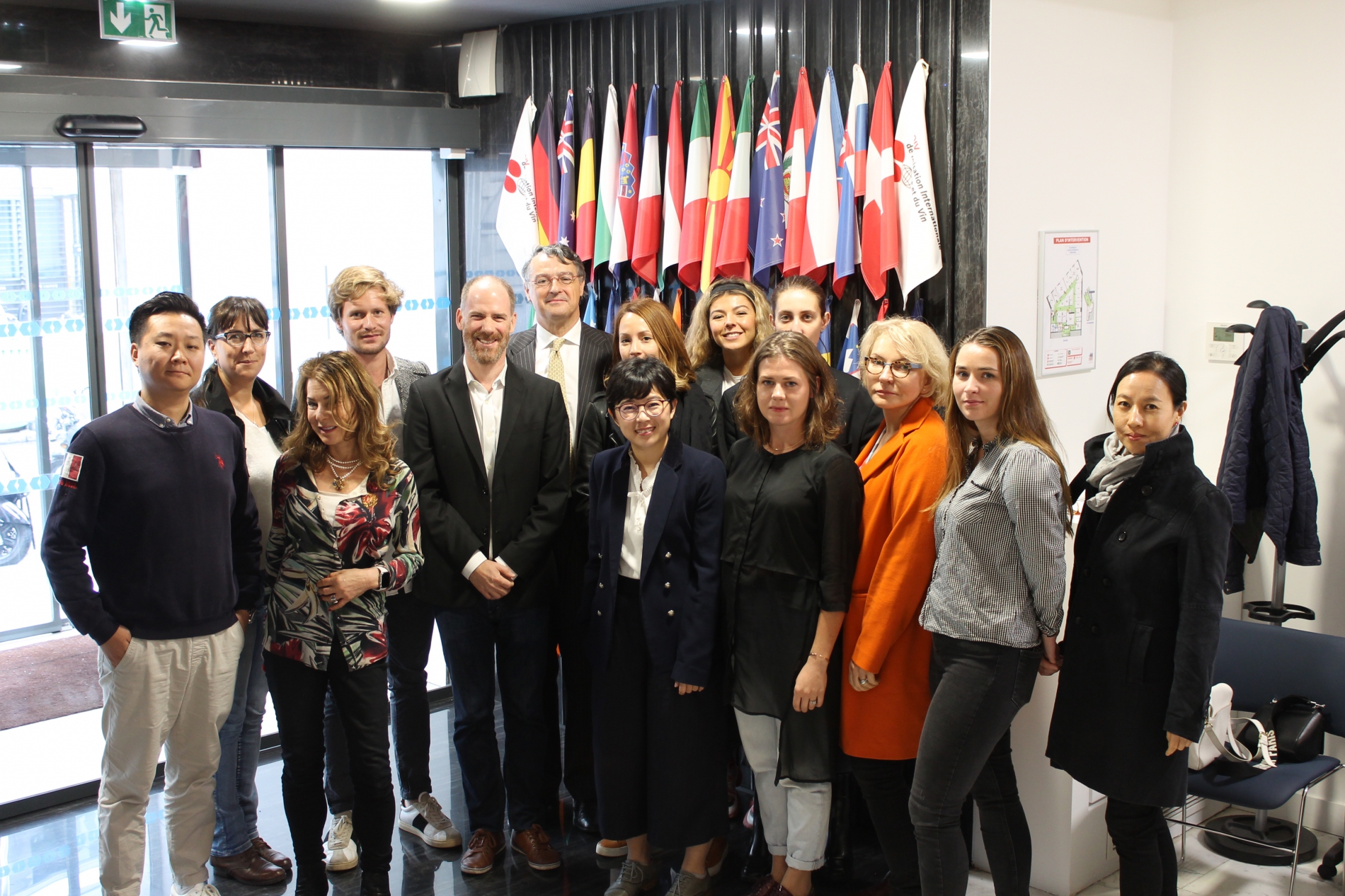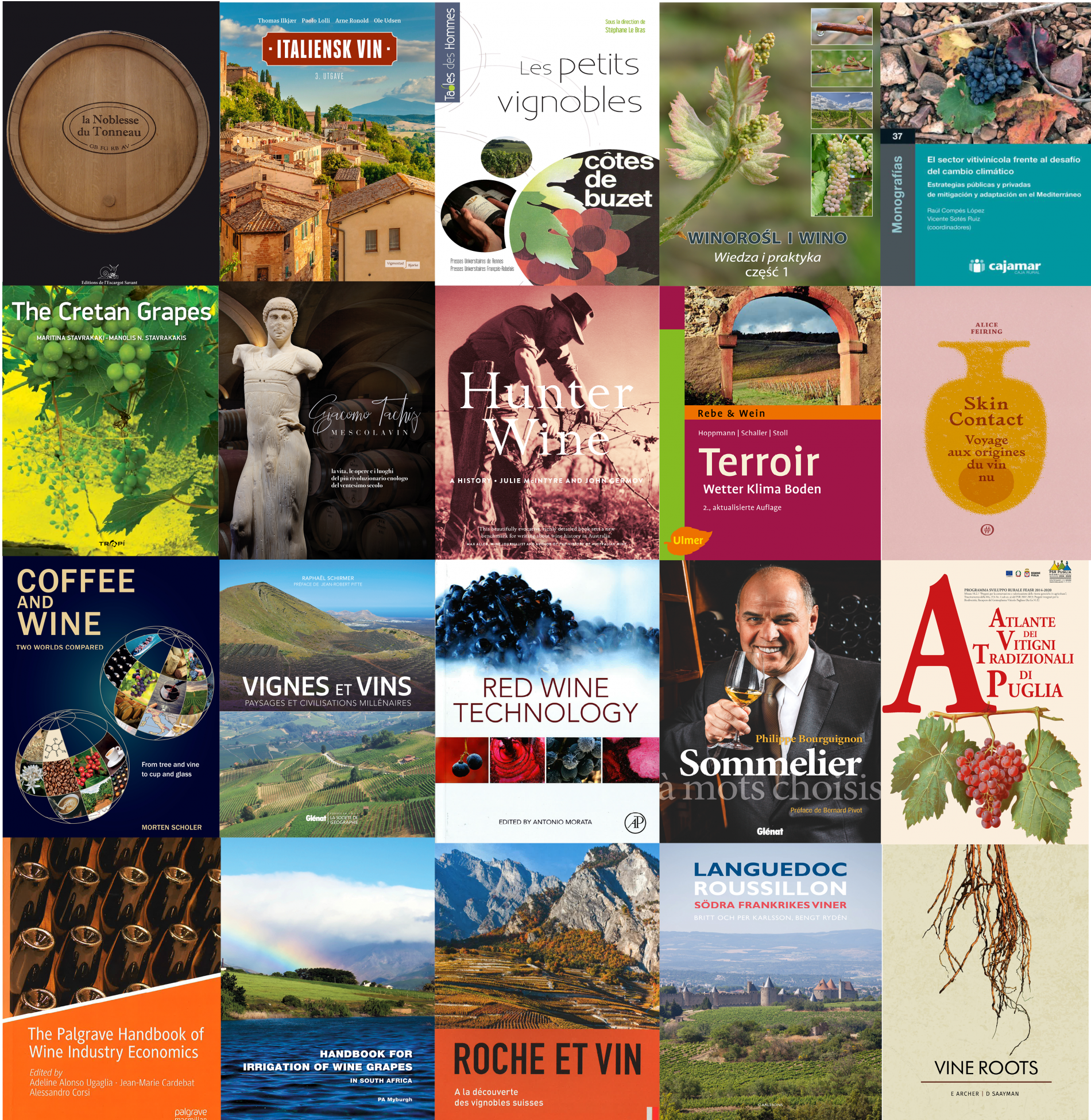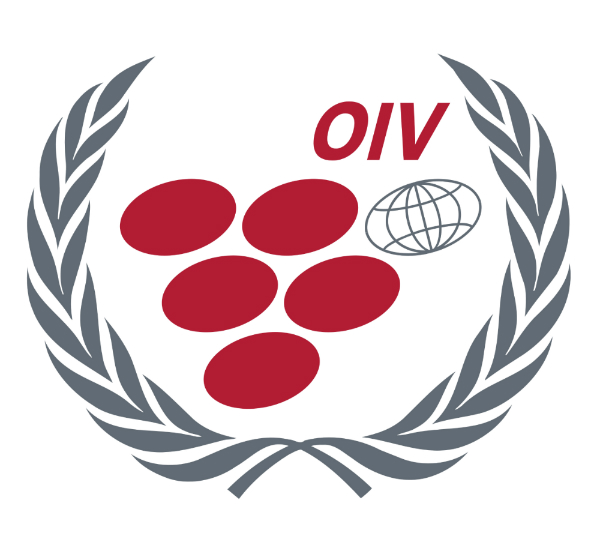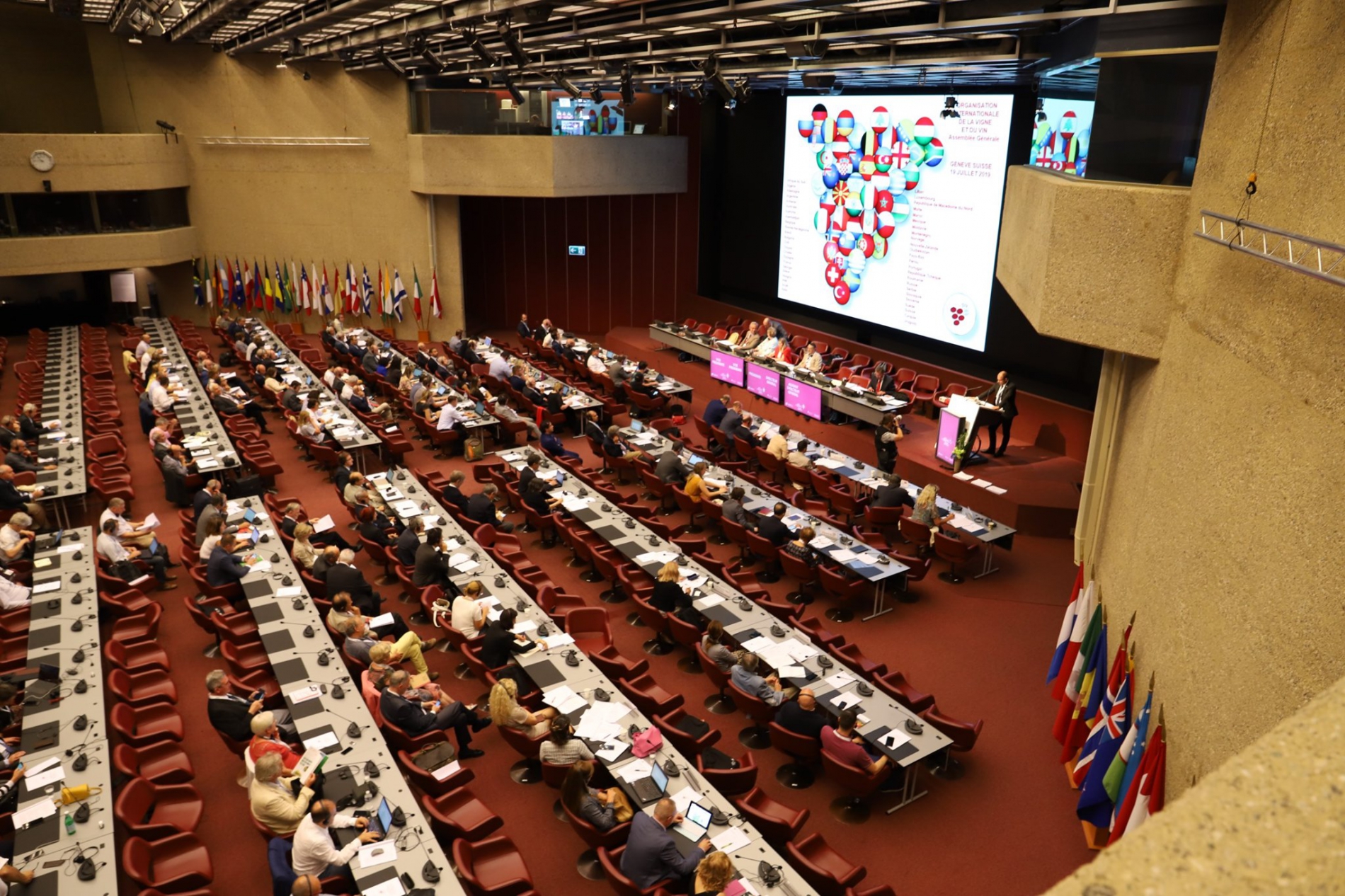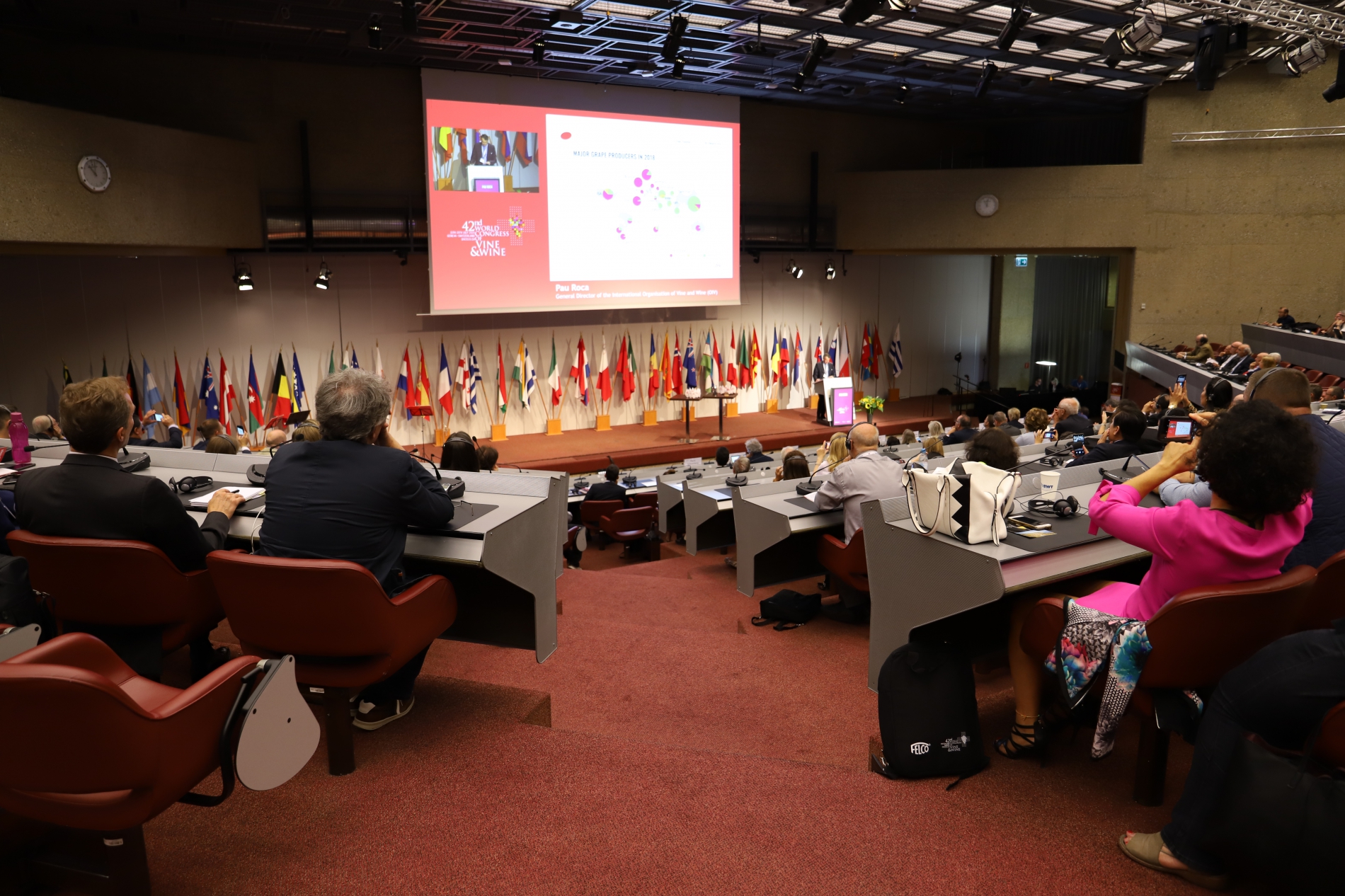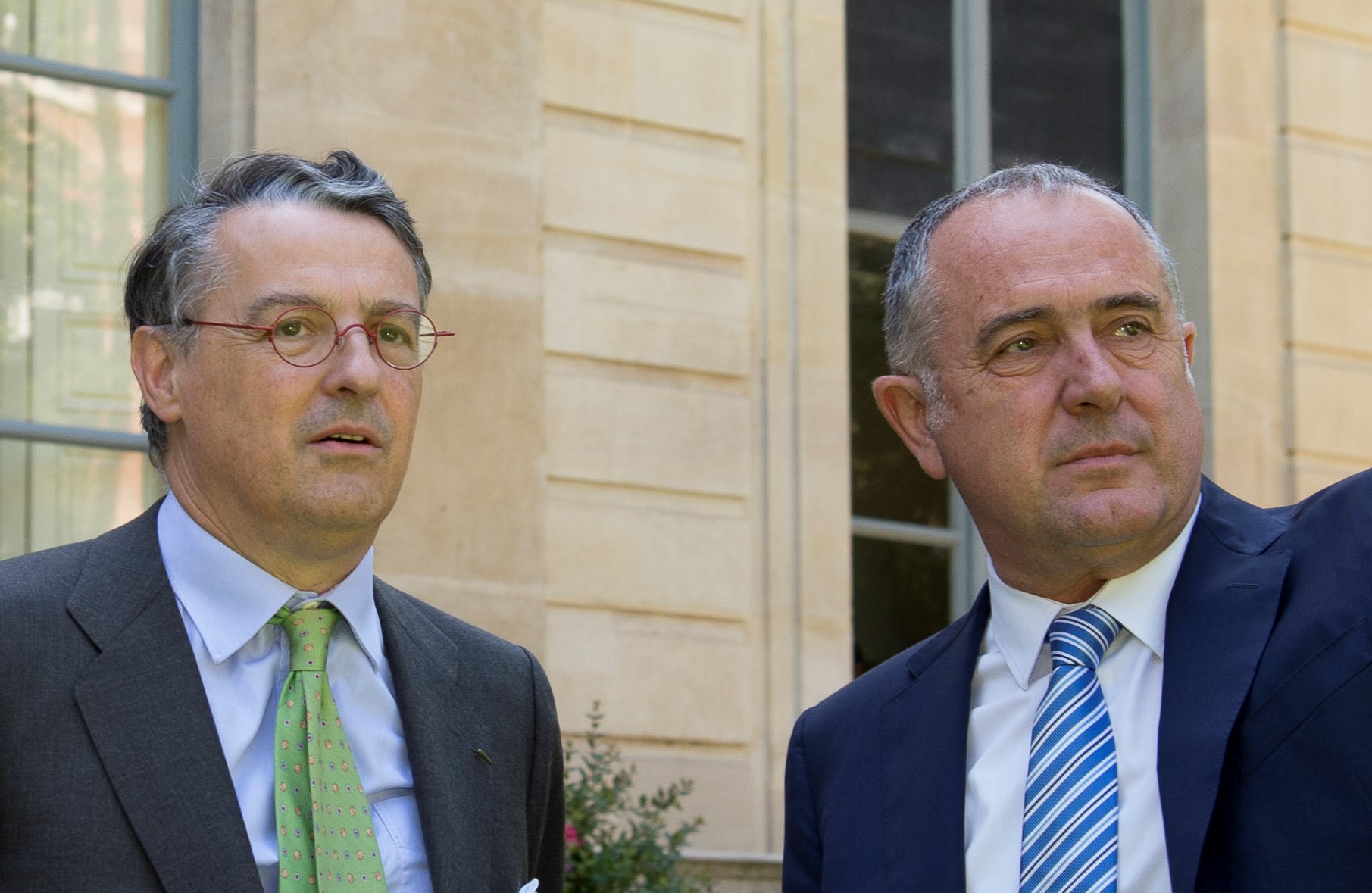30 окт 2019
During the press conference held at the headquarters of the International Organisation of Vine and Wine, the Director General of the OIV, Pau Roca, presented the first estimations for world wine production in 2019.Press releasePPT Presentation 2019 Wine production first data estimations
14 окт 2019
Hosted by H.E. Mr Juan Salazar Sparks, the 2019 OIV Awards ceremony was held in the suites of the Embassy of Chile in Paris. The event was attended by numerous representatives of the Diplomatic Corps, together with OIV President Ms Regina Vanderlinde, OIV Director General Mr Pau Roca, Award Jury President Ms Azélina Jaboulet-Vercherre, and Award Jury Scientific Secretary Mr Jean-Luc Berger.From left to right: Pau Roca, Julien de Beaumarchais de Rothschild (Vice-Chairman of the Board of Directors Baron Philippe de Rothschild), Regina Vanderlinde, H.E. Mr. Juan Salazar Sparks, Azélina Jaboulet Vercherre, Jean-Luc BergerThe renown and prestie of this mark of international recognition were confirmed once again this year by the high quality level demonstrated by the 2019 Award winners in each of the fields represented: scientific and technical, literary, historical, and artistic. A total of 11 Awards and 9 Special Mentions were given out by the international OIV Jury.Read full press release https://youtu.be/FxX-8NtDqvY
10 окт 2019
The repurposing of the building in rue d’Aguesseau prompted the OIV to move its Secretariat, although it will still be located in the 8th arrondissement of Paris, near Parc Monceau.Home to the management and services functions of the OIV since mid-September, the functional and contemporary space has been renovated using cork, thanks to the support of Amorim.Just a stone’s throw from the Place de Rio de Janeiro, dear to the President of the OIV, the new OIV premises at 35 rue de Monceau will host experts attending autumn meetings to take place in the conference centre located opposite on 14 and 15 October, and then in Val de Loire for the adoption of the 2020-2024 Strategic Plan.
07 окт 2019
To attend this press conference, journalists are kindly asked to send an email with their name and their professional contact details to press@oiv.int.Date: Thursday 31 October 2019Time: 11amLocation: *attention new headquarters* International Organisation of Vine and Wine, (OIV), 35 Rue de Monceau, Paris 75008 - Metro station Monceau or Miromesnil [see map]
30 сен 2019
After a presentation of the OIV and its activities given by the various unit heads, this year’s MSc students were welcomed by the Director General, Pau Roca, who explained the future strategic plan of the Organisation and spoke about the main issues for the vitivinicultural sector of today.The specific nature of the course is designed to be mono-sectoral, multi-disciplinary, itinerant, international and experiential all at the same time; it also now has one of the most developed networks in the world of wine. Since 1988, almost 500 players and policy makers in the wine world have taken this training programme.The international dimension to this programme is expressed through a curriculum that every year leads students to discover over 20 key countries on the wine planet, spread over the 5 continents.This was an opportunity for the students on the 32nd year of the OIV MSc in Wine Management to explore the new premises of the OIV, which now resides at 35 Rue de Monceau, 75008 Paris.
11 сен 2019
Information and the 2 registration forms for the 2020 Edition available here.Submissions are opened from September 2019 to 28 February 2020Contact: jurydesprix@oiv.int.
24 июл 2019
On July 17 in Geneva the International OIV Jury awarded 11 Prizes and 9 Special Mentions among 51 works in competition and 15 countries who were represented: one superb OIV Awards vintage 2019!
ViticultureOIV AwardVine Roots / WingerdwortelsEben Archer, Dawid SaaymanPublication IGWS - Institute for Grape & Wine Sciences(EN + Afrikaans, Free Web access)Special MentionHandbook for Irrigation of Wine Grapes in South AfricaPhilip Albertus MyburghPublication IGWS - Institute for Grape & Wine Sciences(Free Web access)
Viticulture and EnologyOIV Award Winorośl I Wino. Wiedza i praktyka (część 1 i 2)Roman Myśliwiec, Ewa Wawro, Wojciech BosakEdition Fundacja Galicja Vitis
EnologyOIV Award Red Wine TechnologyAntonio Morata, coordinateur / coordinatorEdition Elsevier Inc.
EconomyOIV Award The Palgrave Handbook of Wine Industry EconomicsAdeline Alonso Ugaglia, Jean-Marie Cardebat, Alessandro Corsi, coordinatorsEdition Palgrave MacmillanSpecial Mention Coffee and Wine: Two Worlds ComparedMorten ScholerEdition Troubador Publishing Ltd
HistoryOIV AwardLes petits vignobles. Des territoires en question (Moyen Âge-XXIe s.)Stéphane Le Bras, director of the collective workPublication Presses Universitaires de Rennes and Presses Universitaires François RabelaisSpecial MentionHunter Wine : A history (1828 – 1983)Julie McIntyre, John GermovEdition NewSouth Books (University of New South Wales, UNSW Sydney)
LiteratureSpecial Mention Sommelier à mots choisisPhilippe BourguignonWith the contribution of Jean SerroyEdition "Editions Glénat"
Fine Arts - PhotographySpecial MentionGiacomo Tachis - MescolavinBruno Bruchi, photographerAndrea Cappelli, authorEdition Carlo Cambi Editore with the collaboration of Edizioni Effigi with Fondazione ChiantiBanca
Discovering and Presenting WinesOIV AwardLanguedoc Roussillon södra frankrikes vinerBritt Karlsson, Bengt Rydén, Per KarlssonEdition Carlsson BokförlagSpecial MentionSkin Contact - Voyage aux origines du vin nuAlice Feiring(translated by Sophie Brissaud : « For the love of Wine »)Edition "Editions Nouriturfu"
Wines and TerritoriesOIV AwardItaliensk VinThomas Ilkjær, Paolo Lolli, Arne Ronold, Ole UdsenEdition Forlagshuset Vigmostad & BjørkeSpecial MentionVignes et Vins, paysages et civilisations millénairesRaphaël SchirmerEdition "Editions Glénat"
Monographs and Specialised StudiesOIV AwardRoche et vin. À la découverte des vignobles suissesStein und Wein. Entdeckungsreisen durch die Schweizerischen RebbaugebieteEditor-in-chief Rainer KündigWith Jean-Claude Hofstetter, Christoph Meyer, Thomas MumenthalerEdition (FR + DE) AS VerlagSpecial MentionLa Noblesse du TonneauRoland Bugada, Gilles Bousquet, Frédéric Gillet, André ValognesEdition Editions de L'Escargot Savant
Atlas - AmpelographyOIV Award Atlante dei vitigni tradizionali di PugliaPierfederico La Notte, Francesco Civita, Stefano Raimondi, Anna SchneiderEdition CRSFA - Centro di Ricerca, Sperimentazione e Formazione in Agricoltura« Basile Caramia »Special MentionThe Cretan GrapesΚρητική ΑμπελογραφίαMaritina Stavrakaki - Μαριτίνα Σταυρακάκη Manolis N. Stavrakakis - Μανόλης Ν. Σταυρακάκης Edition (GR + EN) TROPI
Sustainable VitivinicultureOIV Award - EX ÆQUOTerroir - Wetter, Klima, BodenDieter Hoppmann, Klaus Schaller, Manfred StollEdition Eugen Ulmer VerlagEl sector vitivinícola frente al desafío del cambio climático. Estrategias públicas y privadas de mitigación y adaptación en el MediterráneoRaúl Compés López, Vicente Sotés Ruiz, coordinatorsEdition Cajamar Caja Rural
21 июл 2019
Thanks to the work of Switzerland’s Organising Committee and Scientific Committee, presided respectively by Simone de Montmollin and François Murisier, Geneva became the global capital of vitiviniculture from 15 to 19 July 2019. A member of the OIV since 1934, Switzerland had previously hosted the World Congress of Vine and Wine in 1955 and in 1977.The 17th General Assembly of the OIV concluded the week, with 18 new resolutions adopted.In the photo: Adrian Aebi, Assistant Director of the Swiss Federal Office for Agriculture (FOAG); Pau Roca, Director General of the OIV; Marco Romano, President of the Swiss Interprofessional Organisation of Vine and Wine (IVVS); Nathalie Fontanet, State Councillor for the Canton of Geneva; François Murisier, President of the Scientific Committee for the 42nd OIV Congress; Simone de Montmollin, President of the Organising Committee for the 42nd OIV Congress; Regina Vanderlinde, President of the OIV; Monika Christmann, Vice-President of the OIV; Luigi Moio, 2nd Vice-President (and Scientific Vice-President) of the OIV.Environmental expectationsWith the central theme of ‘Preservation and innovation: expectations at the environmental, economic and social level’, the discussions of the OIV Congress dealt with the following issues: climate change, to which vines are highly sensitive; value promotion of products (terroirs, origin, sanitary and food-grade quality of vine products, sugar content, allergens, etc.); and vine protection, with the highly topical question of input management. On the opening day of the Congress, the latter theme was also the object of a public conference entitled ‘A reasoned approach to inputs: scientific contributions and consumer perception’.The President of the OIV, Regina Vanderlinde, highlighted the excellent quality of the 348 technical and scientific presentations – some of which came from countries such as Japan or even Nepal.The Director General of the OIV, Pau Roca, who presented a report on the world vitivinicultural situation at the opening ceremony, praised Switzerland’s organisation of this remarkable Congress, which was the fourth biggest in terms of presentations in the last 10 years. Papers that have received author consent for publication will be available on the EDP Sciences Web of Conferences website in September.As part of the Organisation’s sustainable approach, this 42nd Congress was the first ‘paper-free’ OIV Congress. It was also the first time that all of the information regarding the events and scientific work presented was available for consultation via an app.The new OIV resolutionsThe 17th General Assembly of the OIV concluded the week of scientific work with the adoption of 18 new resolutions.The full texts of the resolutions adopted will shortly be published on the OIV websiteWith regard to climate change – a major concern for the sector – it is worth highlighting Resolution OIV-VITI 564B-2019, which defines polyclonal selection, as well as an OIV protocol for the protection and conservation of the intravarietal diversity and the polyclonal selection of vines for grape varieties with wide genetic variability.Consumer expectations and the reduction of the use of SO2 – issues also at the heart of debate within the sector – are the object of Resolution OIV-OENO 594A-2019. This Resolution establishes an innovative practice with the objectives, among others, of reducing the microbial loads of indigenous microorganisms (especially yeasts), and of reducing SO2 levels used in winemaking.A summary of all of the resolutions may be consulted here. The full texts of the resolutions adopted will shortly be published on the OIV website.The OIV Assembly also marked the passing of the baton from Switzerland to Chile, the host country for the future 43rd World Congress of Vine and Wine, to be held in Santiago from 23 to 27 November 2020.
12 июл 2019
The report covers the areas under vines, grape production, wine production and consumption, and wine import and export volumes.In 2018:•The world's winegrowing area represents 7.4 kha •Global grape production reaches 78 mt. Global table grape production is of 27.3 mt. Global dried grape production is of 1.3 mt. •World wine production (excluding juice and must) is estimated at 292 mhl. World wine consumption is estimated at 246 mhl. World trade in wine accounts for 108 mhl in volume and 31 bn EUR in value. The director general of the OIV has also presented the OIV Focus 2019: Industrial Use of Wine.Press ReleasePPT PresentationOIV 2019 reportOIV Focus 2019
Know more about the 42nd World Congress of Vine and Wine
03 июл 2019
During this interview, Pau Roca recalled the fundamental missions of the OIV and its specificities in a globalised sector marked by an international regulatory framework inspired by or founded on the recommendations and expertise of the Organisation. The Minister emphasised the importance of maintaining a balance between the different inclinations that may be expressed within the OIV. Didier Guillaume also conveyed the interest of France, as the host country of the Organisation, in marking the centenary of the OIV in 2024. This could see the convening of a Ministerial Conference on the major issues of the global viticultural sector.Pau Roca also indicated the importance of the strategic axes implemented by the OIV with regard to sustainability, which meet the expectations expressed by the Minister in terms of the development of the agro-ecological transition, for which viticulture should play a promoting role.Pau Roca with Didier Guillaume © Cheick Saidou / agriculture.gouv.fr.
